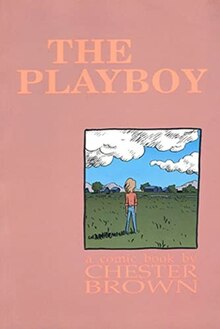
Robert Dennis Crumb is an American cartoonist who often signs his work R. Crumb. His work displays a nostalgia for American folk culture of the late 19th and early 20th centuries, and satire of contemporary American culture.

Melinda Gebbie is an American comics artist and writer, known for her participation in the underground comix movement. She is also known for creating the controversial work Fresca Zizis and her contributions to Wimmen's Comix, as well as her work with her husband Alan Moore on the three-volume graphic novel Lost Girls and the Tomorrow Stories anthology series.

Peter Bagge is an American cartoonist whose best-known work includes the comics Neat Stuff and Hate. His stories often use black humor and exaggerated cartooning to dramatize the reduced expectations of middle-class American youth. He won two Harvey Awards in 1991, one for best cartoonist and one for his work on Hate. In recent decades Bagge has done more fact-based comics, everything from biographies to history to comics journalism. Publishers of Bagge's articles, illustrations, and comics include suck.com, MAD Magazine, toonlet, Discover, and the Weekly World News, with the comic strip Adventures of Batboy. He has expressed his libertarian views in features for Reason.
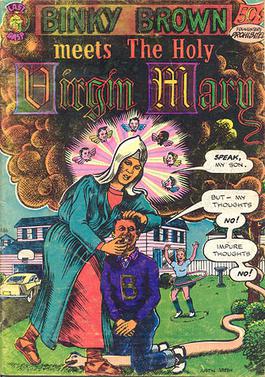
Binky Brown Meets the Holy Virgin Mary is an autobiographical comic by American cartoonist Justin Green, published in 1972. Green takes the persona of Binky Brown to tell of the "compulsive neurosis" with which he struggled in his youth and which he blamed on his strict Roman Catholic upbringing. Green was later diagnosed with obsessive–compulsive disorder (OCD) and came to see his problems in that light.

Gregory Gallant, better known by his pen name Seth, is a Canadian cartoonist. He is best known for his series Palookaville and his mock-autobiographical graphic novel It's a Good Life, If You Don't Weaken (1996).
An autobiographical comic is an autobiography in the form of comic books or comic strips. The form first became popular in the underground comix movement and has since become more widespread. It is currently most popular in Canadian, American and French comics; all artists listed below are from the U.S. unless otherwise specified.

Chester William David Brown is a Canadian cartoonist. Brown has gone through several stylistic and thematic periods. He gained notice in alternative comics circles in the 1980s for the surreal, scatological Ed the Happy Clown serial. After bringing Ed to an abrupt end, he delved into confessional autobiographical comics in the early 1990s and was strongly associated with fellow Toronto-based cartoonists Joe Matt and Seth, and the autobiographical comics trend. Two graphic novels came from this period: The Playboy (1992) and I Never Liked You (1994). Surprise mainstream success in the 2000s came with Louis Riel (2003), a historical-biographical graphic novel about rebel Métis leader Louis Riel. Paying for It (2011) drew controversy as a polemic in support of decriminalizing prostitution, a theme he explored further with Mary Wept Over the Feet of Jesus (2016), a book of adaptations of stories from the Bible that Brown believes promote pro-prostitution attitudes among early Christians.
Joe Matt was an American cartoonist, best known for his autobiographical work, Peepshow.

It's a Good Life, If You Don't Weaken is a graphic novel by Canadian cartoonist Seth. It appeared in a collected volume in 1996 after serialization from 1993 to 1996 in issues #4–9 of Seth's comic book series Palookaville. The mock-autobiographical story tells of its author's obsessive search for the work of a fictional forgotten cartoonist.
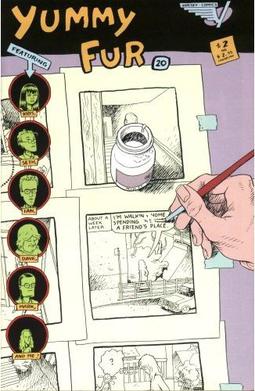
Yummy Fur (1983–1994) was a comic book by Canadian cartoonist Chester Brown. It contained a number of different comics stories which dealt with a wide variety of subjects. Its often-controversial content led to one printer and one distributor refusing to handle it.

I Never Liked You is a graphic novel by Canadian cartoonist Chester Brown. The story first ran between 1991 and 1993 under the title Fuck, in issues #26–30 of Brown's comic book Yummy Fur; published in book form by Drawn & Quarterly in 1994. It deals with the teenage Brown's introversion and difficulty talking to others, especially members of the opposite sex—including his mother. The story has minimal dialogue and is sparsely narrated. The artwork is amongst the simplest in Brown's body of work—some pages consist only of a single small panel.
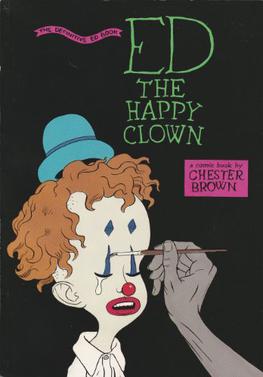
Ed the Happy Clown is a graphic novel by Canadian cartoonist Chester Brown. Its title character is a large-headed, childlike children's clown who undergoes one horrifying affliction after another. The story is a dark, humorous mix of genres and features scatological humour, sex, body horror, extreme graphic violence, and blasphemous religious imagery. Central to the plot are a man who cannot stop defecating; the head of a miniature, other-dimensional Ronald Reagan attached to the head of Ed's penis; and a female vampire who seeks revenge on her adulterous lover who had murdered her to escape his sins.

Vortex Comics is a Canadian independent comic book publisher that began operation in 1982. Under the supervision of president, publisher, and editor Bill Marks, Vortex was known for such titles as Dean Motter's Mister X, Howard Chaykin's Black Kiss, and Chester Brown's Yummy Fur, the last of which was a pioneer of alternative comics. Vortex also earned a reputation for publishing Canadian comic book creators such as Brown, Ty Templeton, Ken Steacy, and Jeffrey Morgan.

The Narrative Corpse is a chain story, or comic jam, created by 69 all-star cartoonists in the early-to-mid 1990s. A graphic novel compilation of the result was published in 1995.
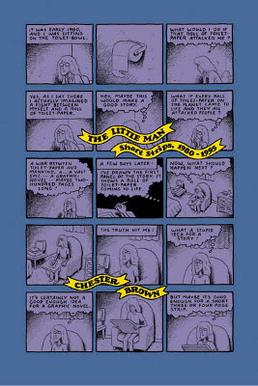
The Little Man: Short Strips 1980–1995 is a collection of short works by award-winning Canadian cartoonist Chester Brown, published by Drawn & Quarterly in 1998. It collects most of Brown's non-graphic novel short works up to that point, with the notable exception of his incomplete adaptations of the Gospels.
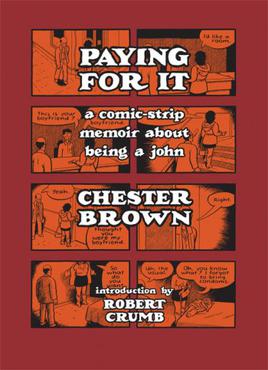
Paying for It, "a comic strip memoir about being a john", is a 2011 graphic novel by Canadian cartoonist Chester Brown. A combination of memoir and polemic, the book explores Brown's decision to give up on romantic love and to take up the life of a "john" by frequenting prostitutes. The book, published by Drawn & Quarterly, was controversial, and a bestseller.
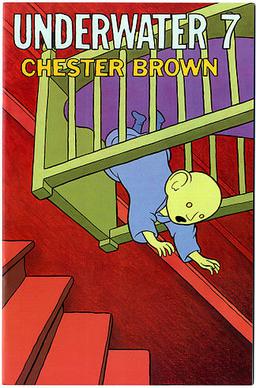
Underwater was an alternative comic book by award-winning Canadian cartoonist Chester Brown that was published from 1994 until 1997, when the ambitious project was abandoned unfinished by its creator.

Chester Brown adapted Gospel of Mark and part of the Gospel of Matthew to comics; installments appeared in his comic books Yummy Fur and Underwater. Brown ran the first installment of the Gospel of Mark in Yummy Fur #4 in 1987, and left Matthew unfinished after cancelling Underwater in 1997. Brown had planned to do all four of the canonical gospels, but in 2011 stated that it is unlikely he will finish even Matthew.
Canadian cartoonist Chester Brown attracted the attention of critics and peers in the early 1990s alternative comics world when he began publishing autobiographical comics in his comic book Yummy Fur. During this period Brown produced a number of short strips and two graphic novels: The Playboy (1992) and I Never Liked You (1994). The personal and revealing deal with Brown's social awkwardness and introversion, and the artwork and page layouts are minimal and organic. In 2011 Brown returned to autobiography with Paying for It, an account of his experience with prostitutes.

Canadian comics refers to comics and cartooning by citizens of Canada or permanent residents of Canada regardless of residence. Canada has two official languages, and distinct comics cultures have developed in English and French Canada. The English tends to follow American trends, and the French, Franco-Belgian ones, with little crossover between the two cultures. Canadian comics run the gamut of comics forms, including editorial cartooning, comic strips, comic books, graphic novels, and webcomics, and are published in newspapers, magazines, books, and online. They have received attention in international comics communities and have received support from the federal and provincial governments, including grants from the Canada Council for the Arts. There are comics publishers throughout the country, as well as large small press, self-publishing, and minicomics communities.
